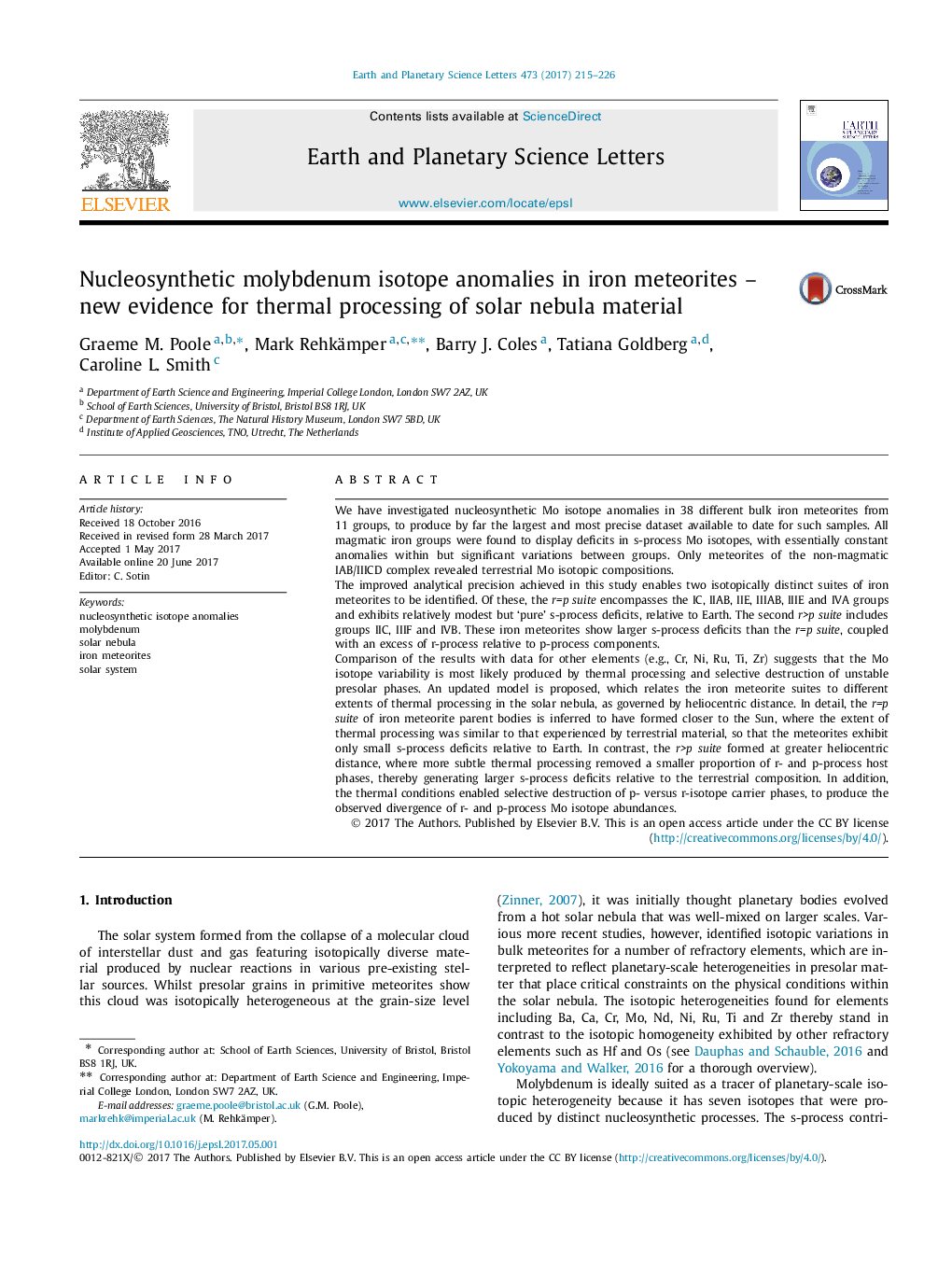| Article ID | Journal | Published Year | Pages | File Type |
|---|---|---|---|---|
| 5779699 | Earth and Planetary Science Letters | 2017 | 12 Pages |
Abstract
Comparison of the results with data for other elements (e.g., Cr, Ni, Ru, Ti, Zr) suggests that the Mo isotope variability is most likely produced by thermal processing and selective destruction of unstable presolar phases. An updated model is proposed, which relates the iron meteorite suites to different extents of thermal processing in the solar nebula, as governed by heliocentric distance. In detail, the r=p suite of iron meteorite parent bodies is inferred to have formed closer to the Sun, where the extent of thermal processing was similar to that experienced by terrestrial material, so that the meteorites exhibit only small s-process deficits relative to Earth. In contrast, the r>p suite formed at greater heliocentric distance, where more subtle thermal processing removed a smaller proportion of r- and p-process host phases, thereby generating larger s-process deficits relative to the terrestrial composition. In addition, the thermal conditions enabled selective destruction of p- versus r-isotope carrier phases, to produce the observed divergence of r- and p-process Mo isotope abundances.
Related Topics
Physical Sciences and Engineering
Earth and Planetary Sciences
Earth and Planetary Sciences (General)
Authors
Graeme M. Poole, Mark Rehkämper, Barry J. Coles, Tatiana Goldberg, Caroline L. Smith,
